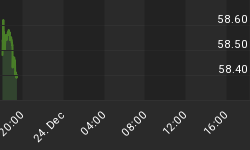Some interesting developments are playing out in long term charts that make me feel comprehensively bearish over the long term:
a) Firstly a massive rising wedge is forming on the long term S and P 500 chart. This is much bigger than that observed in 2000 or 2008 and just a matter of time before it breaks to the downside with profound consequences. A major bear market could ensue post the break. Chart courtesy of StockTwits.com:
b) Secondly Margin Debt is at record levels and has eclipsed levels seen during the maniacal peaks of 2000 and 2008. Once the above rising wedge breaks you could have a rush for the exit triggered by margin calls. Chart courtesy disqus.com:

c) Thirdly despite multiple dosages of Quantitative easing (QE) from global central banks the velocity of money is below the levels observed during the Great Depression. This implies that changes in money supply will have little impact on the economy going forward. Further QE's are likely but won't really stimulate the global economy. Chart source armstrongeconomics.com.

The above developments taken together with ongoing bear markets in several key asset classes make for a deflationary collapse increasingly likely in the not too distant future.
















